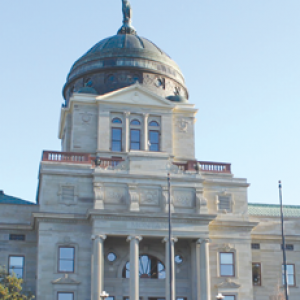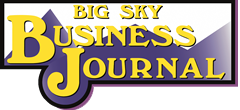By Dan Brooks, Billings Chamber of Commerce
One of the Billings Chamber’s public policies is to reduce the cost of doing business in Montana. One expense that can be costly to a business is litigation. Fortunately, Montana’s legal climate ranks pretty well according to the U.S. Chamber’s Institute for Legal Reform (ILR) Lawsuit Climate Survey, putting our state within the Top 10 at #7.
It hasn’t always been the case that Montana is viewed in that top tier. In previous ILR surveys, our state was ranked 27th, 34th, and 45th in 2017, 2015, and 2012 respectively. We’ve been climbing the ranks as businesses have slowly shifted perceptions of the fairness and reasonableness of our state’s liability systems.
To maintain and perhaps increase that favorable perception, the Montana Chamber is putting forward some thoughtful tort reform bills that we are thankful for and will be supporting.
The first, SB 216, deals with product liability reform. Product liability laws are intended to provide compensation to folks harmed by defective products. However, current product liability law in Montana lacks some reasonable defenses for business. This bill makes a number of common sense changes to protect our Montana manufacturing and retail entities from unfair claims:
* Creates a comparative fault defense that allows product sellers to show that another party contributed to the injury.
* Strengthens product misuse defense and allows product sellers to argue that the product was used contrary to an express warning or instruction included with the product.
* Creates a defense for government safety regulation compliance if the product complied with mandatory government safety regulations and requirements.
* Creates a 10-year statute of repose, with reasonable exceptions, recognizing that most products have a limited useful life and eventually wear out.
* Allows for an innocent-seller defense, protecting retailers that sell products unchanged from manufacturers.
* Adds a no safer alternative defense, allowing the reasonable consideration that there is no safer alternative in existence at the time of sale.
The second bill is LC 0932, which attempts to shine a light on the unregulated third-party litigation financing (TPLF) industry. Third-party litigation financing is the investment by hedge funds, wealthy individuals, and sovereign wealth funds in the outcome of lawsuits for a profit.
Imagine the imperfect hypothetical where Mr. Baggins is suing Bert for property damages caused when Bert irreparably soiled Mr. Baggins’ coat, mistaking it for a handkerchief. Typically, Mr. Baggins and Bert would have their day in court, the dispute would get resolved, and damages recovered. However, let’s assume a TPLF, Oakenshield Capital, wants to get involved and helps fund Mr. Baggins’ suit against Bert in exchange for a share of the recovery. Oakenshield Capital’s interest is in a return on investment, not an appropriate or fair outcome. Are they influencing Mr. Baggins to seek more damages than justified? Or to continue a lengthy legal battle when settlement is best? What is the percentage of winnings Mr. Baggins would owe to Oakenshield Capital? In the event Mr. Baggins loses the suit, will Oakenshield Capital assist Mr. Baggins if he incurs additional costs or penalties? Do Bert or the court even know Oakenshield Capital is involved?
This bill provides thoughtful reforms that protect consumers from potential predatory practices by TPLFs and increases transparency by:
* Requiring TPLFs to register.
* Limiting interest rates TPLFs can charge to plaintiffs.
* Capping TPLF’s share of winnings from plaintiffs.
* Requiring disclosure to all parties of TPLF involvement.
* Creating TPLF liability for court-order costs/penalties against the plaintiff.
We are grateful for the Montana Chamber’s prioritization of these bills. Passage will help improve the legal climate in Montana for our business community.
House Bill 30
Revise laws relating
to dangerous drugs
Rep. Denise Baum (D)
HD 47
Chamber Supports
This bill enhances penalties for criminals who commit the offense of distributing dangerous drugs, or intend to distribute, while in possession of a firearm, a destructive device, or another dangerous weapon. Often, our law enforcement officers encounter dangerous weapons when dealing with drug-related crimes. This provides an additional tool for state prosecutors and disincentivizes drug dealers from carry weapons. The bill has 15 bipartisan co-sponsors from our local delegation, for which the Chamber is incredibly grateful. The bill was heard in (H) Judiciary on Friday, January 27th.




